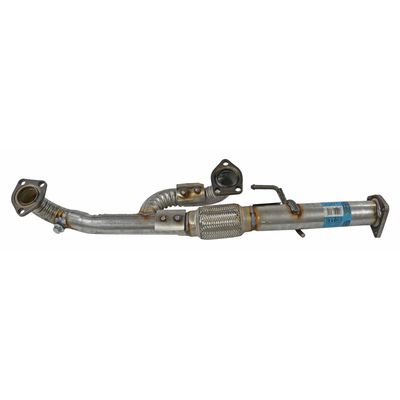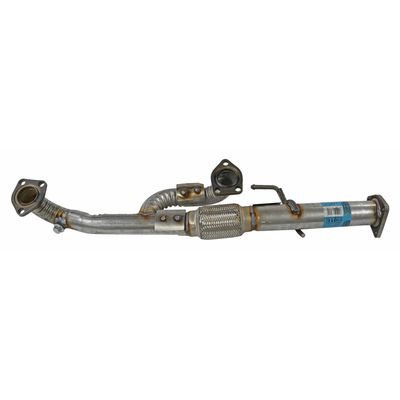Answer
Aug 16, 2024 - 07:57 AM
The primary difference between a Walker Exhaust H-Pipe and a Walker Y-Pipe lies in their design, function, and the way they manage exhaust flow within a vehicle's exhaust system. Here’s a detailed comparison:
1. Design and Configuration- H-Pipe:
- An H-pipe consists of two parallel exhaust pipes connected by a horizontal pipe, forming an "H" shape. This configuration is typically used in dual exhaust systems, where each exhaust pipe serves a separate bank of cylinders in a V6, V8, or similar engine.
- Y-Pipe:
- A Y-pipe is shaped like the letter "Y," where two exhaust pipes converge into a single pipe. It is commonly used in vehicles with a single exhaust system to combine the exhaust gases from two separate cylinder banks into one pipe.
- H-Pipe:
- Balancing Exhaust Flow: The H-pipe is primarily used to balance the exhaust flow between the two sides of a dual exhaust system. By allowing some exhaust gases to pass between the two exhaust pipes, the H-pipe helps equalize pressure, improving engine performance and reducing exhaust noise.
- Reducing Exhaust Pulses: The connection between the two pipes in an H-pipe configuration helps reduce the impact of exhaust pulses, leading to a smoother exhaust note and reducing the "popping" or "crackling" sound that can occur in high-performance engines.
- Y-Pipe:
- Merging Exhaust Flow: The Y-pipe's main function is to merge the exhaust gases from two separate manifolds into a single stream. This is necessary in vehicles with dual cylinder banks but a single exhaust system. The Y-pipe efficiently channels exhaust gases toward the catalytic converter and the rest of the exhaust system.
- Improving Exhaust Flow: By combining the exhaust flow, the Y-pipe helps reduce backpressure, improving engine efficiency and performance.
- H-Pipe:
- Typically used in high-performance or dual-exhaust systems found in sports cars, muscle cars, or modified vehicles where equalizing the exhaust flow from both sides of the engine can enhance performance and create a more balanced exhaust sound.
- Y-Pipe:
- Commonly used in vehicles with a single exhaust system that have a V6, V8, or similar engine configuration. It’s found in many passenger vehicles, SUVs, and trucks where the exhaust gases from both cylinder banks need to be merged into a single pipe.
- H-Pipe:
- The H-pipe tends to produce a deeper, more classic muscle car sound. It smooths out the exhaust pulses and creates a more mellow exhaust tone.
- Y-Pipe:
- The Y-pipe typically results in a smoother, more even exhaust flow, which can lead to a more consistent and quieter exhaust note compared to an H-pipe or X-pipe configuration.
- H-Pipe:
- H-pipes are often favored in performance applications where exhaust balance and sound tuning are important. They help maintain low-end torque and smooth out the exhaust flow.
- Y-Pipe:
- Y-pipes are more about merging exhaust flows efficiently to maintain good exhaust scavenging and reduce backpressure in single-exhaust systems. They are essential for maintaining efficiency in vehicles with only one downstream exhaust path.
- H-Pipe: Primarily used in dual exhaust systems to balance exhaust flow between two pipes, reduce exhaust pulses, and create a deep, balanced exhaust note. Ideal for performance applications.
- Y-Pipe: Used to merge exhaust gases from two cylinder banks into a single pipe in vehicles with a single exhaust system. It focuses on improving exhaust flow, reducing backpressure, and ensuring that exhaust gases are efficiently routed through the rest of the exhaust system.





Add New Comment